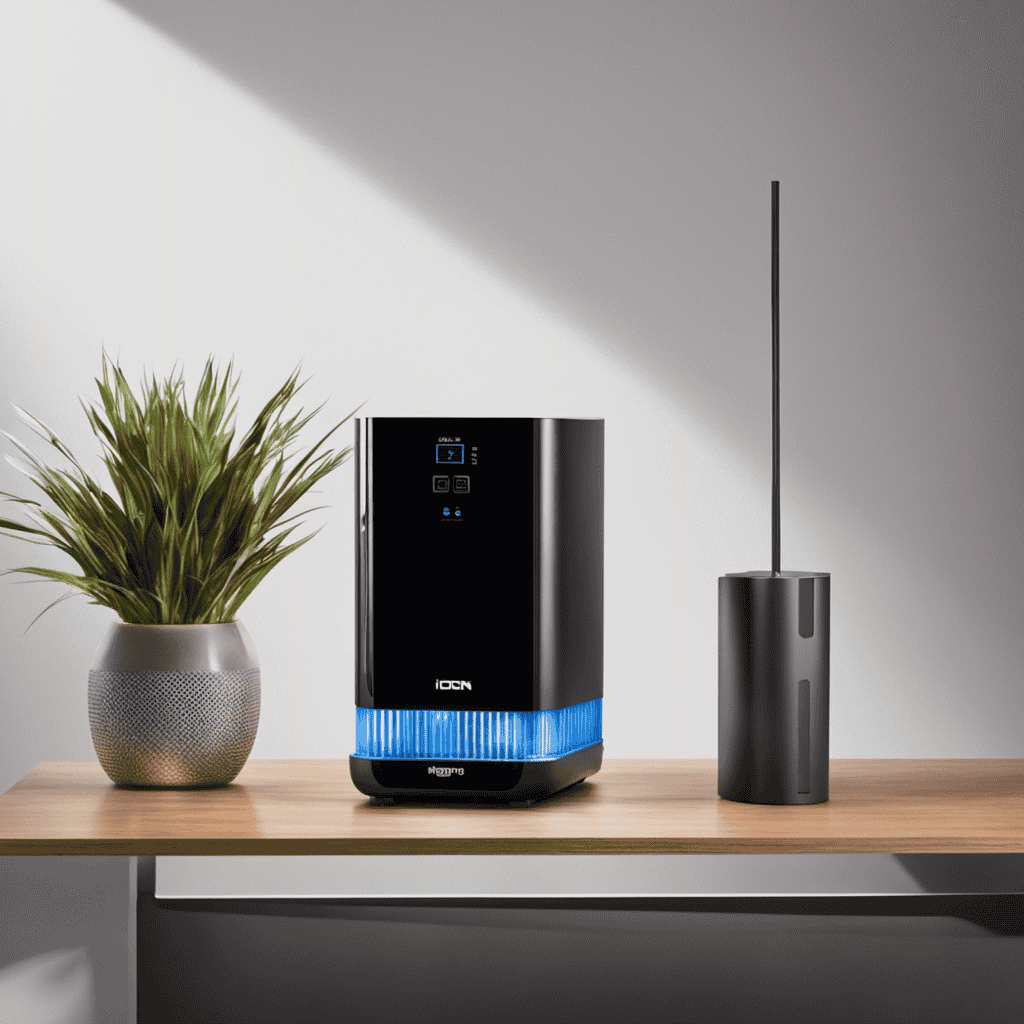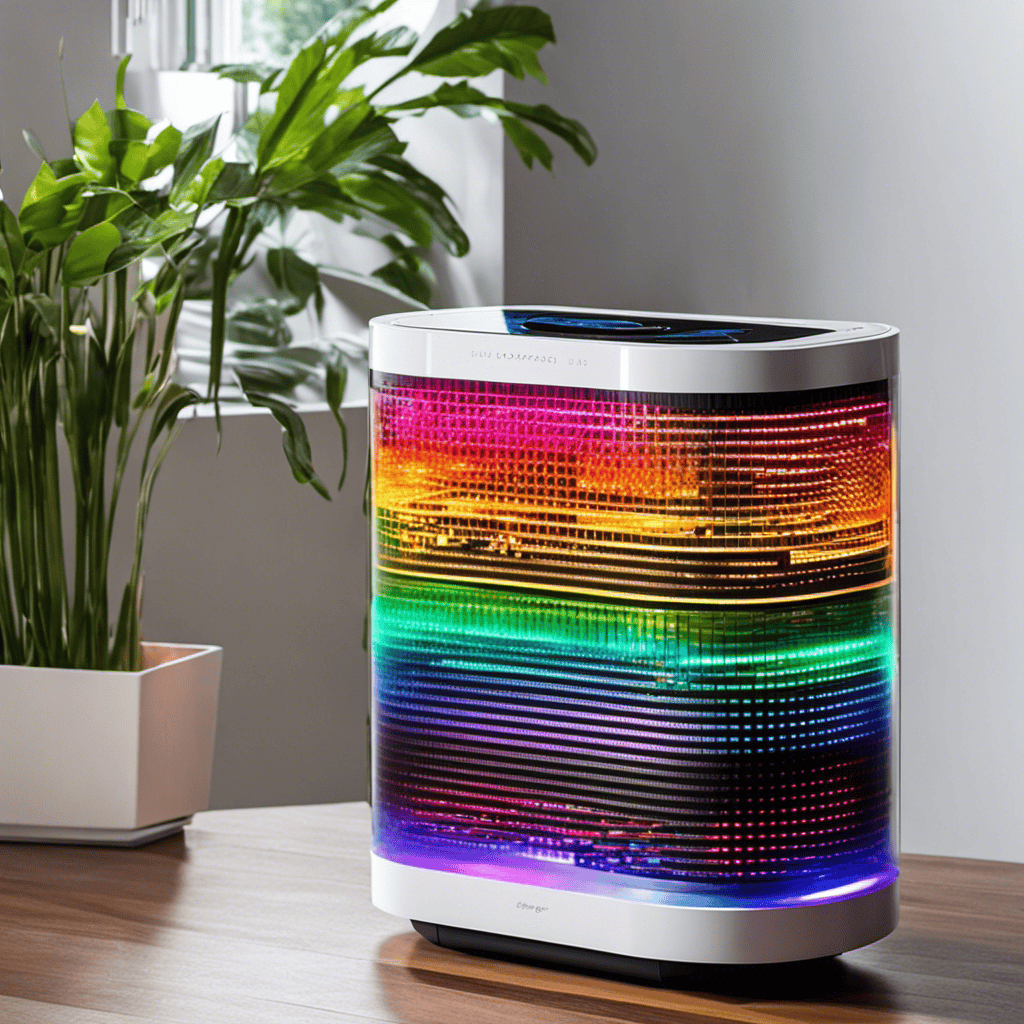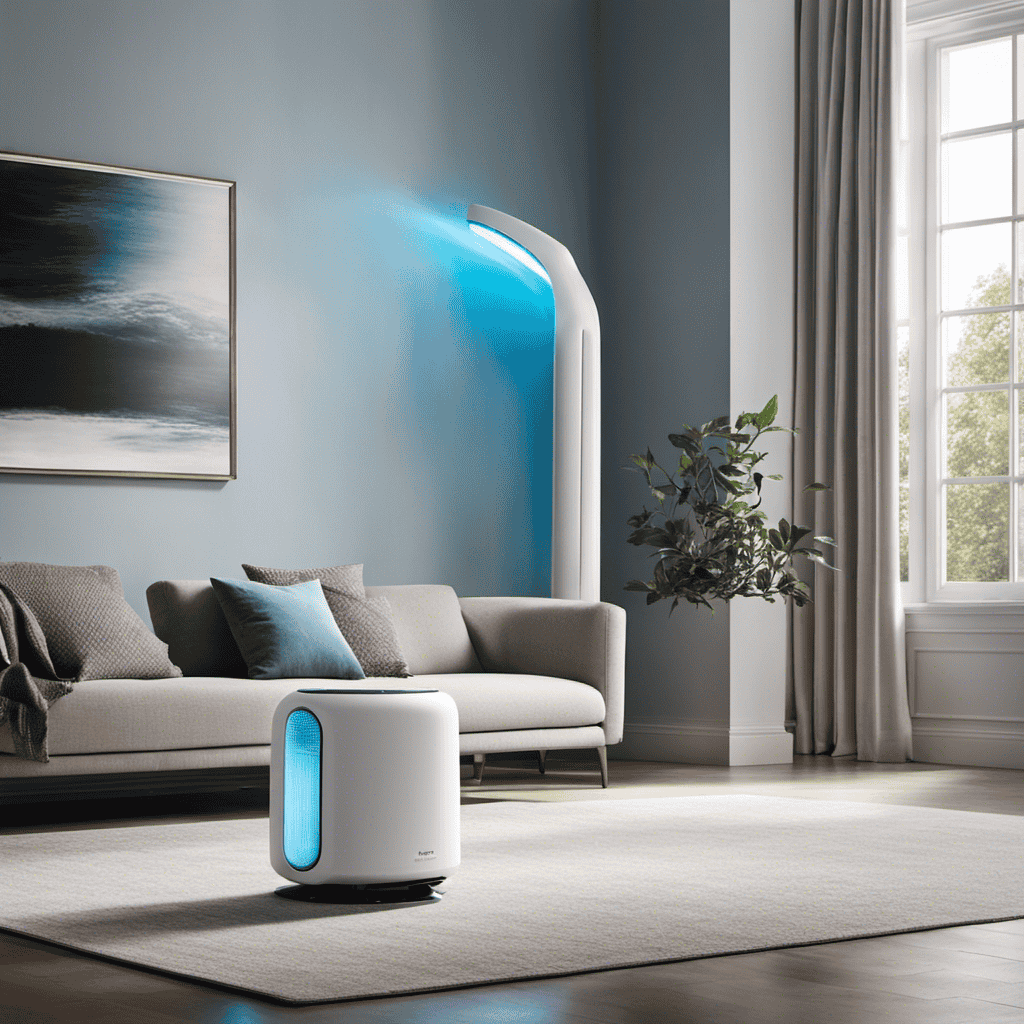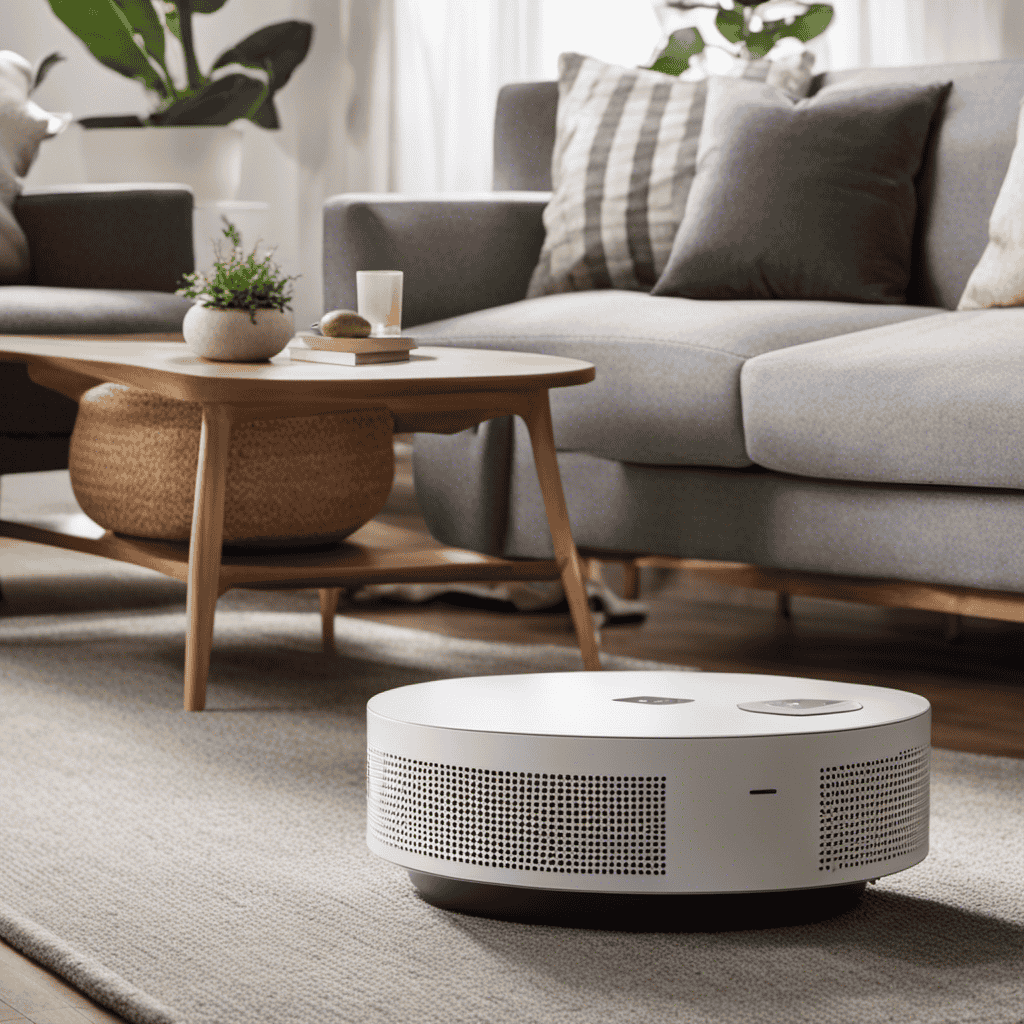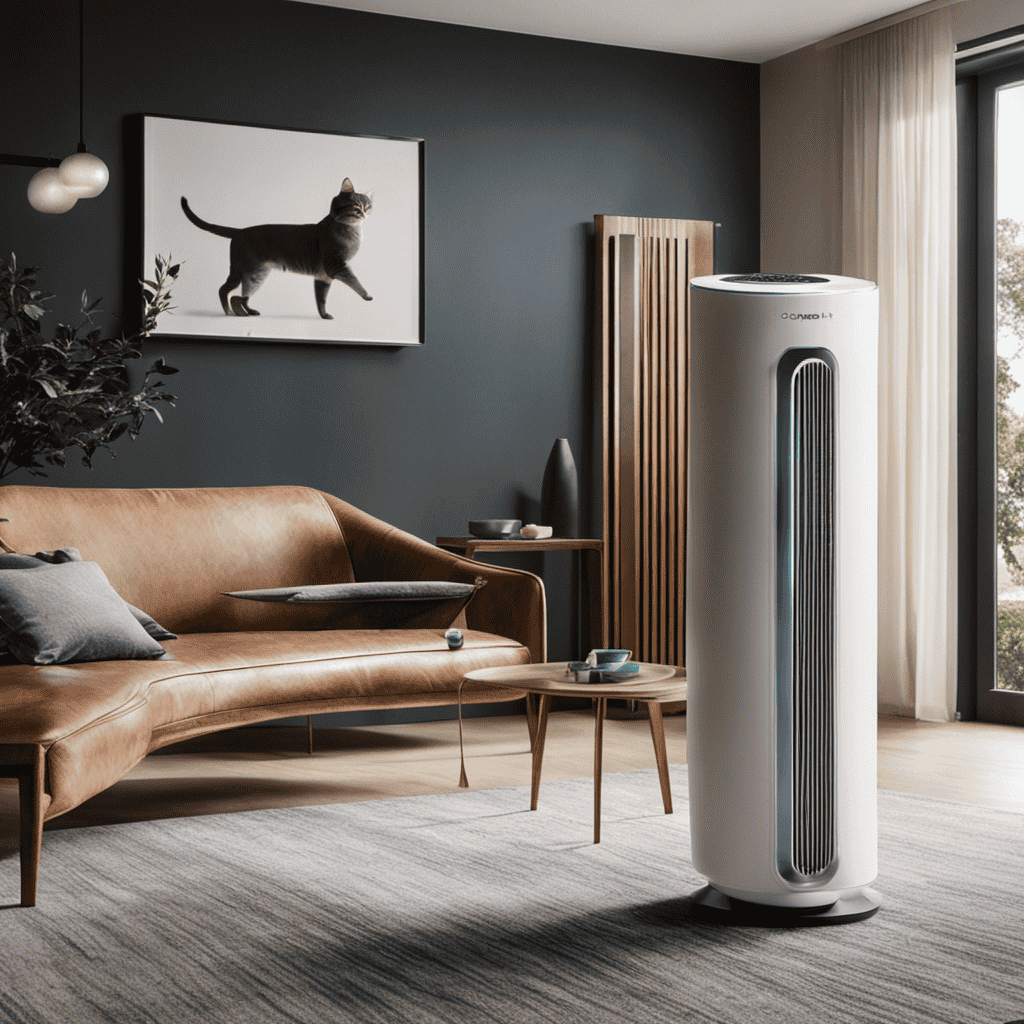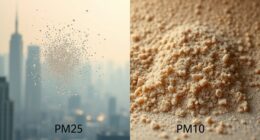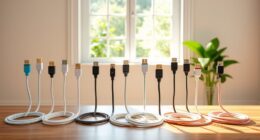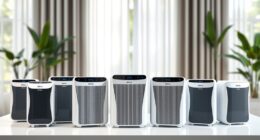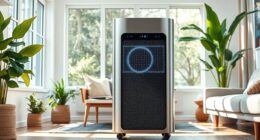As a dedicated user of air purifiers, I have always been intrigued by the mechanics behind these gadgets.
One component that caught my attention is the ion generator. This small but powerful feature plays a crucial role in enhancing air quality by releasing negatively charged ions into the environment.
In this article, we’ll delve into how an ion generator works in an air purifier, explore the benefits it brings, debunk common misconceptions, and provide useful tips for maintenance.
Get ready to dive into the world of ion generators and unlock the secrets to cleaner, fresher air.
Key Takeaways
- Ion generators use electricity to release charged particles called ions into the air, which attach to airborne particles like dust, pollen, and pet dander.
- The attached ions make particles too heavy to stay airborne, causing them to fall to the ground and improving indoor air quality by removing pollutants.
- Ion generators can neutralize unpleasant odors by binding to odor-causing molecules and effectively reduce airborne allergens, including smaller particles that traditional filters may not capture.
- However, it is important to carefully consider the potential negative effects and safety concerns associated with ion generators, such as ozone production and the inability to capture larger particles like dust or pet dander.
How Does an Ion Generator Work in an Air Purifier
An ion generator uses electricity to create and release charged particles called ions into the air. These ions then attach themselves to airborne particles like dust, pollen, and pet dander. This process makes these particles too heavy to stay airborne, causing them to fall to the ground.
The role of ion generators in improving indoor air quality is significant. By removing these pollutants from the air, ion generators can help reduce the risk of allergies and respiratory issues.
However, it is important to consider the pros and cons of using ion generators in air purifiers. While they can effectively remove particles from the air, they can also produce ozone as a byproduct, which can be harmful in high concentrations.
Therefore, it is crucial to carefully consider the potential benefits and drawbacks before incorporating an ion generator into an air purifier.
Benefits of Using an Ion Generator in an Air Purifier
You can experience several benefits by using an ion generator in your air purifier. The advantages of utilizing an ion generator include:
-
Improved air quality: The ion generator releases negatively charged ions into the air, which attach to airborne particles like dust, pollen, and pet dander. This causes them to become heavier and fall to the ground or get trapped in the purifier’s filters, resulting in cleaner air.
-
Odor elimination: The ion generator also helps to neutralize unpleasant odors by binding to odor-causing molecules and eliminating them from the air.
Effectiveness is a key factor in the benefits of using an ion generator. Studies have shown that ion generators can significantly reduce airborne allergens and improve indoor air quality. These devices are particularly effective in removing particles smaller than what traditional filters can capture.
Common Misconceptions About Ion Generators in Air Purifiers
Don’t be fooled by common misconceptions about the benefits of using an ion generator in your air purifier. While ion generators are often touted as effective tools for improving indoor air quality, it is important to consider the negative effects and safety concerns associated with them.
One common misconception is that ion generators can completely eliminate all pollutants from the air. However, this is not entirely true. While ion generators can help remove some airborne particles, they are not capable of capturing larger particles like dust or pet dander. Additionally, there are safety concerns associated with ion generators. These devices produce ozone as a byproduct, which can be harmful to human health when present in high concentrations.
To emphasize the potential negative effects and safety concerns of using ion generators, consider the following table:
| Misconception | Reality |
|---|---|
| Ion generators remove | Ion generators can |
| all pollutants | only remove certain |
| from the air | airborne particles |
| ———————– | ———————— |
| Ion generators are | Ion generators produce |
| completely safe | ozone as a byproduct, |
| which can be harmful | |
| to human health | |
| ———————– | ———————— |
It is important to weigh the potential benefits against the negative effects and safety concerns before deciding to use an ion generator in your air purifier. Consider alternative air purification methods that do not produce ozone, such as HEPA filters, to ensure a safer and more effective indoor environment.
Factors to Consider When Choosing an Air Purifier With an Ion Generator
Consider several factors when choosing an air purifier that includes an ion generator. The presence of an ion generator can provide numerous advantages for individuals with allergies. Here are some factors to avoid and advantages to consider:
Factors to avoid:
- Ozone production: Check if the ion generator produces ozone as a byproduct. Ozone can exacerbate respiratory issues and should be avoided.
- Maintenance requirements: Look for an air purifier with an ion generator that requires minimal maintenance. Complex cleaning procedures can be time-consuming and costly.
Advantages of using an ion generator in an air purifier for allergies:
- Improved air quality: Ion generators release negatively charged ions that bind to allergens, dust, and other airborne particles, making them heavier and easier to filter out.
- Reduction of odors: Ion generators can help eliminate unpleasant odors by neutralizing odor-causing molecules.
- Enhanced respiratory health: By removing allergens and irritants from the air, ion generators can alleviate symptoms of allergies and respiratory conditions.
When selecting an air purifier with an ion generator, carefully consider these factors to ensure optimal performance and a healthier indoor environment.
Tips for Proper Maintenance of an Air Purifier With an Ion Generator
To ensure optimal performance and a healthier indoor environment, it’s important to properly maintain an air purifier with an ion generator.
One crucial aspect of maintenance is regularly cleaning or replacing the air purifier filter. There are different types of air purifier filters, such as HEPA filters, activated carbon filters, and pre-filters.
HEPA filters are highly effective at removing small particles and allergens from the air, while activated carbon filters help eliminate odors and chemicals. Pre-filters, on the other hand, capture larger particles and prolong the lifespan of the main filter.
Troubleshooting air purifier issues is also essential. If the purifier is not turning on, check the power source and ensure it is properly plugged in. Additionally, cleaning the ionizing wires and plates regularly can help maintain the ion generation function of the air purifier.
Frequently Asked Questions
Can an Ion Generator in an Air Purifier Remove All Types of Pollutants From the Air?
An ion generator in an air purifier can remove various types of pollutants from the air, including bacteria and viruses. It is important to compare the effectiveness of ion generators with other types of air purifiers to make an informed decision.
Are There Any Health Risks Associated With Using an Ion Generator in an Air Purifier?
Using an ion generator in an air purifier can have health risks. The ionization process produces ozone, which can irritate the respiratory system. It’s important to consider the potential drawbacks alongside the health benefits.
Do Ion Generators Produce Any Sound or Noise When Operating?
Yes, ion generators in air purifiers can emit a faint humming sound when operating. However, they do not produce any harmful substances in the air and are generally safe for pets.
Can an Ion Generator in an Air Purifier Eliminate Odors?
Yes, an ion generator in an air purifier can eliminate odors. It uses ion generator technology to release negatively charged ions that attach to odor-causing particles, neutralizing them and improving air quality.
Are Ion Generators in Air Purifiers Effective in Reducing Allergens Like Pollen and Pet Dander?
Ion generators in air purifiers are effective in reducing indoor pollutants such as pollen and pet dander. Compared to other types of air purifiers, ion generators use charged particles to attract and neutralize harmful particles, improving overall air quality.
Conclusion
In conclusion, after exploring the workings of an ion generator in an air purifier, it is evident that this feature can greatly enhance the overall air quality in your home.
The benefits of using an ion generator include the removal of harmful pollutants and allergens, as well as the creation of a more refreshing environment.
Despite some misconceptions, when choosing an air purifier with an ion generator, it is important to consider factors such as room size and maintenance requirements.
As the saying goes, ‘Clean air is essential for a healthy life,’ so investing in an air purifier with an ion generator is a wise decision for your well-being.
